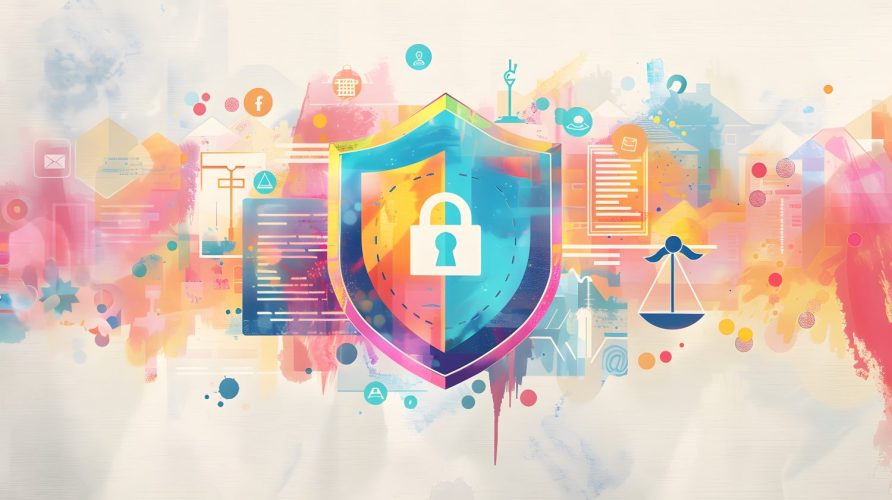How to Protect Your Small Business From a Cyberattack

Most SMBs are not fully prepared to defend themselves against a cyberattack. Start with these three areas to build a layered defense and a strong cybersecurity strategy for your business.
Cyberattacks are always a challenge for small and medium businesses (SMBs), especially in our digital-first era. With 67% of SMBs adopting AI-driven tools like automation to enhance security, it’s clear that small businesses like yours are taking proactive steps to stay protected from cyberattacks. These attacks can lead to data breaches, financial losses, and even reputational harm. However, building a strong defense doesn’t have to break your budget. With the right strategies, you can protect yourself, keep your customers’ trust, and focus on what matters most: growing your business.
Let’s explore how you can build affordable and effective defenses, and how tools like Starter Suite can help you stay protected.
What we’ll cover:
- Why cybersecurity matters for your small business
- Four affordable steps to protect your business from cyberattacks
- How AI and Agentforce can boost your defenses
- How Starter Suite supports cybersecurity for SMBs
Why cybersecurity matters for your small business
Small businesses are often seen as easy targets for cybercriminals because of limited cybersecurity resources. Statistics show that 43% of cyberattacks target small businesses, underlining the urgent need for action. A small business cyberattack isn’t just a financial blow — it can disrupt operations, damage customer trust, and take years to recover from.
Hacking can mean gaps in team training, outdated technology, and inadequate data backups. By taking proactive measures, such as using a secure CRM for SMB to centralize and secure data, you can address vulnerabilities before they become threats. We will dig into that more, but first let’s go through four easy ways you can protect your business from attacks.
Four affordable steps to protect your business from cyberattacks
Protecting your small business doesn’t require a massive budget. Here are some practical and cost-effective strategies to secure your business today:
Start with SMB Basics
1. Train your team to spot and prevent attacks
Your team is your first line of defense. Many attacks on small businesses happen because someone clicks on a phishing email or uses a weak password. Providing regular training can help:
- Teach your team to recognize phishing attempts and suspicious links.
- Use strong, unique passwords for accounts and encourage two-factor authentication (2FA).
- Conduct internal drills or use services that simulate phishing to identify vulnerabilities.
Free resources, like Trailhead for Small Business, can provide training to ensure your team is well-prepared.
2. Implement basic security measures
Affordable tools like firewalls and antivirus software form the backbone of cybersecurity. A firewall is a security system that monitors and controls incoming and outgoing network traffic based on predetermined security rules, acting as a barrier between a trusted network and potential threats. Firewalls prevent unauthorized access to your network, while antivirus software detects and removes threats.
To strengthen your security, combine these tools with secure platforms like Starter Suite, your all-in-one customer management system with built-in protections. Starter Suite encrypts customer data, monitors for suspicious activity, and provides secure user authentication, helping you safeguard sensitive information without added complexity.
3. Back up your data regularly
Data backups are crucial to minimizing the impact of a small business cyberattack. Start by scheduling automatic backups using secure, cloud-based solutions. Encrypt your backups to protect sensitive information, and store copies in multiple locations for added security. Regularly test your backups to ensure quick recovery if needed. Platforms like Commerce for Small Business simplify this process by automatically storing transaction data, customer details, and inventory records in the cloud. With built-in encryption and easy recovery options, you can quickly restore lost data and keep your business running smoothly.
4. Use secure communication tools
Implement secure collaboration platforms like Slack for Small Business to streamline communication while safeguarding your sensitive data. Slack integrates effortlessly with CRM tools, allowing your team to access and share centralized customer information without compromising security. With features like encrypted messaging, file sharing, and seamless integrations, Slack ensures your small business stays connected and protected, fostering efficient and secure team collaboration.
How AI and Agentforce can boost your defenses
Artificial intelligence (AI) is revolutionizing cybersecurity for SMBs by automating critical tasks, improving efficiency, and identifying threats faster than ever. Here’s how AI can transform your security strategy:
- Predict attacks: AI analyzes patterns in historical data to anticipate potential threats. For example, it can identify vulnerabilities before attackers exploit them, helping you stay proactive. With Salesforce AI, these insights are easily accessible and actionable.
- Detect unusual activity: When suspicious behavior is detected, AI tools can immediately isolate affected systems, block malicious IPs, and minimize damage—all without requiring human intervention.
- Scan for alerts: AI continuously monitors your systems for anomalies and provides instant alerts, giving you the chance to respond to threats before they escalate.
Kickstart your SMB with Starter Suite
Get started with CRM and see results from day one with Starter Suite — the all-in-one suite with the marketing, sales, service, and commerce tools you need to succeed.



Why Agentforce is your cybersecurity ally
Agentforce is a proactive, autonomous AI application that provides specialized support to your various teams or customers, enabling you to equip it with essential knowledge for task execution. Agentforce takes AI-powered security to the advanced level, specifically tailored for small businesses. This AI capability of Salesforce helps you:
- Identify vulnerabilities: Agentforce’s Atlas Reasoning Engine monitors your network to pinpoint potential weaknesses, offering real-time insights to prevent security breaches before they happen.
- Simplify compliance: Stay aligned with data privacy regulations and industry standards seamlessly. Agentforce ensures compliance management is straightforward, helping you avoid fines and maintain your reputation.
- Embedded security in your CRM: Designed to integrate effortlessly with tools like Salesforce’s AI CRM, Agentforce makes security an integral part of your business processes.

How Starter Suite supports cybersecurity for SMBs
If you’re looking to safeguard your small business from cyber threats, Salesforce provides an easy-to-use, secure solution to get started. Designed for small businesses, it helps protect your data while streamlining operations, all in one affordable package.
Here’s how Salesforce supports cybersecurity:
- Data security at its core: Protect sensitive customer information with secure, centralized data storage, reducing the risks associated with data breaches.
- Built-in compliance features: Access features, like storefront builder and omni-channel routing that help your business stay aligned with data privacy standards, giving you peace of mind while managing customer trust.
- AI-powered insights: With built-in AI capabilities, Salesforce can help detect risks early and automate responses, keeping your business safe from potential threats.
- Scalability as you grow: Designed to grow with your business, Salesforce allows you to expand security features as your needs evolve.
Protect your SMB from cyberattacks
Cyberattacks on small businesses don’t have to be overwhelming. By taking simple, cost-effective steps — like training your team, backing up data, and adopting AI tools — you can keep your business secure and running smoothly. With tools like Agentforce and Starter Suite, you can protect your business while building stronger customer relationships.
Ready to secure your business? Start your free trial with Starter Suite today and take the first step toward a safer future.
Already a Salesforce customer? Learn how to get started with Agentforce for free.
AI supported the writers and editors of this article.





























